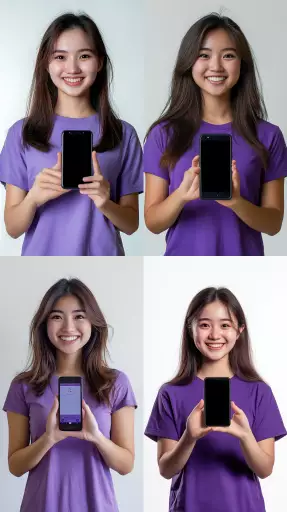Explore the Best AI Image Gallery

Beyond the Brush: How Wearable Tech is Redefining Creative Expression
The realm of creativity has undergone a profound metamorphosis with the advent of wearable technology. No longer confined to traditional tools and mediums, artists, designers, and innovators are now harnessing the power of smart garments, augmented reality (AR) glasses, and haptic feedback devices to explore uncharted territories of artistic expression.
A Canvas on Your Body: Wearable Tech for Artistic Exploration
Wearable technology is blurring the lines between artist and canvas, allowing for a more immersive and interactive creative process. Imagine painting with your movements, sculpting with your touch, or composing music through gestures captured by sensors embedded in clothing.
- Gesture-Based Art: Wearable sensors can translate body movements into brushstrokes, allowing artists to create dynamic and expressive artwork in real time. Imagine a dancer whose every twirl and leap becomes a stroke of color on a digital canvas.
- Interactive Installations: AR glasses can overlay digital elements onto the physical world, transforming ordinary spaces into immersive art experiences. Visitors could interact with virtual sculptures, paint on projected canvases, or participate in collaborative art projects.
- Haptic Feedback for Sculptural Design: Haptic feedback devices worn by designers allow them to feel the texture and shape of their creations as they are being built virtually. This can revolutionize 3D printing and sculpting by enabling a more tactile and intuitive design process.
The Ethical Dimensions of Wearable Creativity
While the possibilities of wearable tech in the creative industry are vast, its essential to consider the ethical implications.
- Data Privacy: Wearables collect vast amounts of personal data about users movements, preferences, and even emotional states. Ensuring responsible data handling and user consent is crucial.
- Accessibility and Inclusivity: Access to wearable technology should be equitable. Efforts must be made to ensure that people with disabilities have equal opportunities to participate in and benefit from these innovations.
- Intellectual Property: As AI algorithms become increasingly involved in creative processes, questions arise about ownership and attribution of artwork generated by machines.
Future Trends: The Convergence of Wearables and Creativity
The future of wearable tech in the creative industry is brimming with exciting possibilities.
- Brain-Computer Interfaces (BCIs): BCIs could allow artists to control digital creations with their thoughts, unlocking a new level of intuitive and immersive expression.
- Personalized Creative Experiences: Wearables can tailor creative tools and environments to individual user preferences, fostering personalized learning and artistic development.
- Cross-Platform Collaboration: Wearable technology will enable seamless collaboration between artists across geographical boundaries, fostering a global creative community.
Conclusion
Wearable tech is not merely a tool for creatives; its a catalyst for a fundamental shift in how we conceive and experience art. As these technologies continue to evolve, the possibilities for artistic expression are boundless, promising a future where creativity knows no limits.